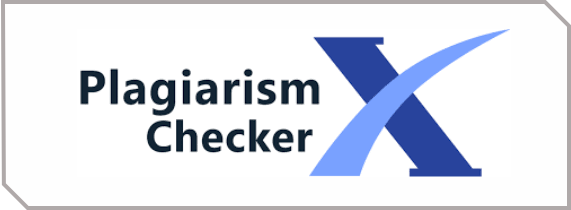Norm Referenced Test Sebagai Metode Penilaian Berdasarkan Kelompok Kelas
DOI:
https://doi.org/10.62383/katalis.v1i2.393Keywords:
Norm Referenced Test, Assessment Method, Student GroupAbstract
There are two ways to process test results to determine graduation standards, namely Norm Referenced Test (NRT) and Criteria Referenced Test (CRT). However, they differ in data processing function, which affects the outcome of data processing. Because the author tends to process score results based on norms with the reasoning that there are no absolute provisions put forth by one party in one direction. Therefore, through this article, the author tries to explain in depth about this Norm Referenced Test along with examples of score processing. This study uses a literature review with a qualitative approach. The results of this study show that with Norm Referenced Test, students' graduation will be determined by summing up or finding the average score from the final learning outcomes, and that's how they will be declared as either passing or failing participants. Like the test results processing discussion, where out of 25 students, after calculating the average score it was found to be 67.92, therefore if a student's score does not meet this requirement, they will be declared as not passing. This means among the group table receiving scores below 65 will need remedial, while scores of 70 and above are declared passing..
References
Abrams, M., & Scheutz, M. (2022). Social Norms Guide Reference Resolution. Proceedings of the 2022 Conference of the North American Chapter of the Association for Computational Linguistics: Human Language Technologies, 1–11. Seattle, United States: Association for Computational Linguistics. https://doi.org/10.18653/v1/2022.naacl-main.1
Amal, I. (2024). Integrasi Pendekatan Acuan Patokan (PAP) dan Pendekatan Acuan Normatif (PAN) dalam Konteks Penilaian Pembelajaran Sekolah. Ideguru:Jurnal Karya Ilmiah Guru, 9(3), 1373–1380. https://doi.org/10.51169/ideguru.v9i3.854
Drisko, J. W., & Maschi, T. (2016). Content Analaysis. New York: Oxford University Press.
Gaertner, M. N. (2022). Norm-Referenced Assessment. In Norm-Referenced Assessment. Routledge. https://doi.org/10.4324/9781138609877-REE13-1
Gunver, M. G. (2022). Norm-Referenced Scoring on Real Data: A Comparative Study of GRiSTEN and STEN. SAGE Open, 12(2), 215824402210912. https://doi.org/10.1177/21582440221091253
Hikamudin, E., & Hairun, Y. (2021). Analisis Disparitas Skor Tampak dan Estimasi Skor Murni dengan Pengkategorian Acuan Normatif pada Tes Hasil Belajar Siswa. Delta-Pi: Jurnal Matematika Dan Pendidikan Matematika, 10(1). https://doi.org/10.33387/dpi.v10i1.2905
Huda, N., Dahliana, D., & Aseri, A. F. (2024). Improving The Quality of Prophetic Intelligence-Based Moral Education Programs with the CIPP Model. Eurasian Journal of Educational Research, 107(107). https://doi.org/DOI: 10.14689/ejer.2023.107.001
Ilhan Beyaztaş, D., & Eser, D. Ç. (2023). ÖĞRETMEN ADAYLARININ GÖZÜNDEN BAĞIL DEĞERLENDİRME: ÖĞRENME YAKLAŞIMLARI İLE SOSYAL-DUYUŞSAL ÖZELLİKLERE ETKİLERİ VE DEĞERLENDİRME BEKLENTİLERİ. Uluslararası İnovatif Eğitim Araştırmacısı, 3(2), 248–273. https://doi.org/10.29228/iedres.64712
Kanjee, A. (2010). Norm‐Referenced Testing. In I. B. Weiner & W. E. Craighead (Eds.), The Corsini Encyclopedia of Psychology (1st ed., pp. 1–2). Wiley. https://doi.org/10.1002/9780470479216.corpsy0611
Khaeruddin, & Ali, M. S. (2012). Evaluasi Pembelajaran. Makassar: Badan Penerbit UNM.
Krippendorff, K. (2019). Content Analaysis: An Introduction to Its Methodology (4th ed.). Los Angeles: SAGE Publications, Inc.
Naga, D. S. (1992). Pengantar Teori Sekor pada Pengukuran Pendidikan. Jakarta: Gundarma.
Naga, D. S. (2013). Teori Sekor pada Pengukuran Mental. Jakarta: PT. Nagarani Citrayasa.
Pohan, R. (2007). Metodologi Penelitian Pendidikan. Yogyakarta: Ar-Rijal Institute.
Rutherford, S., Kia, S. M., Wolfers, T., Fraza, C., Zabihi, M., Dinga, R., … Marquand, A. F. (2022). The normative modeling framework for computational psychiatry. Nature Protocols, 17(7), 1711–1734. https://doi.org/10.1038/s41596-022-00696-5
Sukmadinata, N. S. (2015). Metodologi Penelitian Pendidikan. Bandung: Remaja Rosdakarya.
Timmerman, M. E., Voncken, L., & Albers, C. J. (2021). A tutorial on regression-based norming of psychological tests with GAMLSS. Psychological Methods, 26(3), 357–373. https://doi.org/10.1037/met0000348
Wilson, V. (2011). Research Methods: Content Analysis. Evidence Based Library and Information Practice, 6(4), 177–179. https://doi.org/10.18438/B86P6S
Yulianto, I. (2024). Analisis Classrooms Assessment: Remedial, Pengayaan, Pendekatan Acuan Patokan (PAP) dan Pendekatan Acuan Normatif (PAN). Grata: Jurnal Inovasi Pendidikan, 1(1), 27–36.
Downloads
Published
How to Cite
Issue
Section
License
Copyright (c) 2024 Katalis Pendidikan : Jurnal Ilmu Pendidikan dan Matematika

This work is licensed under a Creative Commons Attribution-ShareAlike 4.0 International License.













